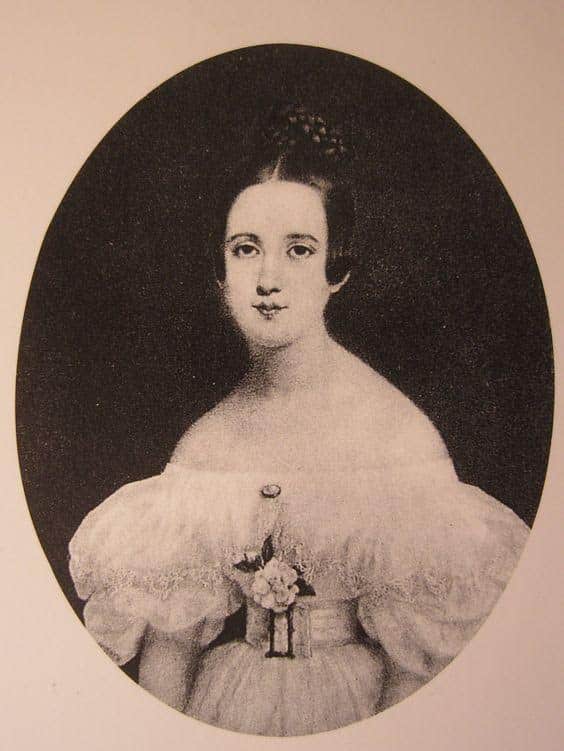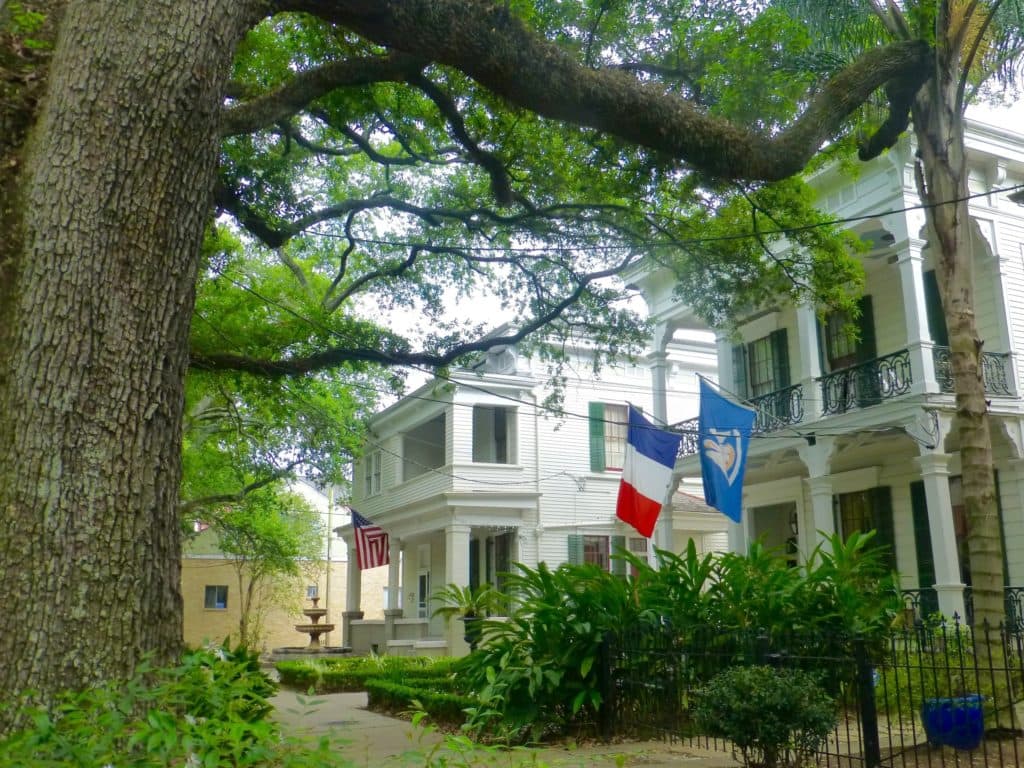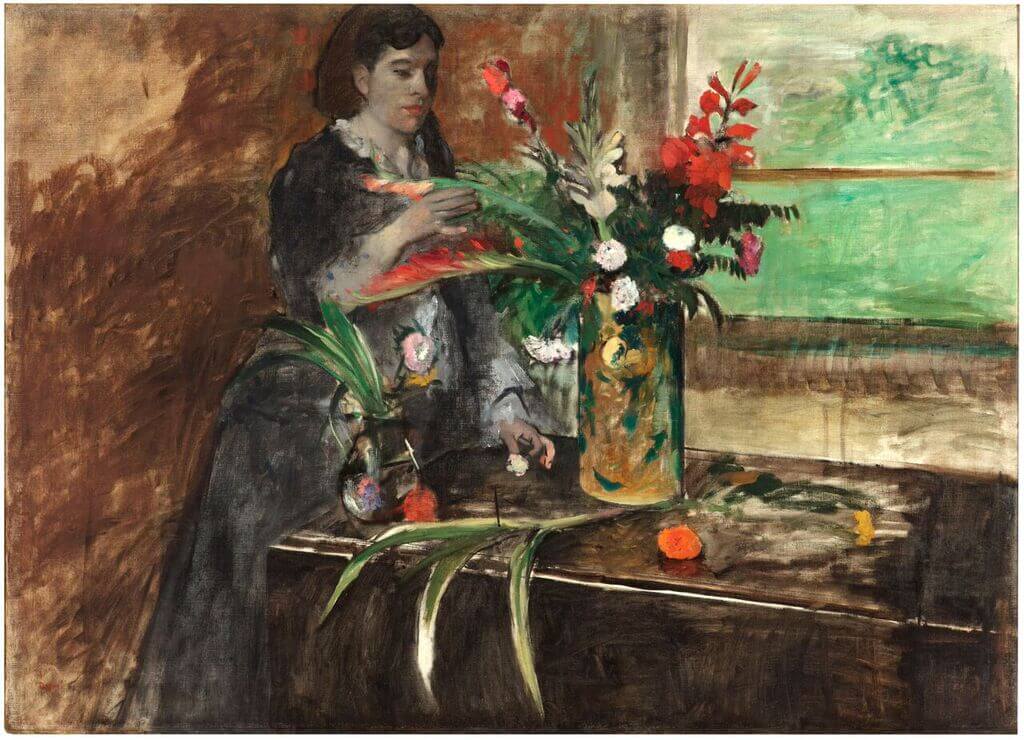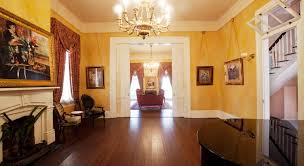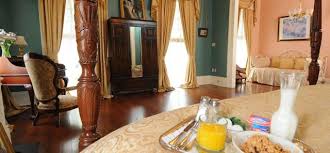Edgar Degas, Impressionist Painter, Lived and Painted in New Orleans
Part 1.
This story is a legend in New Orleans, told over and over again, but not much known outside of the Crescent City.
How is this possible?
Young Degas & the New Orleans Connection
Degas came from a large family: the Mussons. The French Creole side lived in New Orleans and the De Gas side, (now known as Degas), lived in Paris and Naples.
His Mother, Marie Celestine Musson and her brother Michel, were both born in New Orleans, descendants of some of the original French and Spanish Settlers. His mother and grandmother both come from a prominent Creole family. They also had ancestors from France, Spain and the West Indies.
When their father was suddenly widowed, he moved to Paris with Degas’ mother and the other children. They were educated and grew up in France.
At eighteen, Marie Celestine fell in love with a neighbor, a banker, Auguste De Gas. They were married in 1832, when she was just eighteen. Even though the marriage was allegedly not the happiest, they went on to have five children.
Their oldest child was Hilaire Germaine Edgar De Gas. He became known to the world as Edgar Degas, preferring the less pretentious way of spelling his last name. Later on in life, Degas would become the famous world renowned artist and one of the founders of the impressionist movement in France.
Degas— the Young Man
The De Gas Family business was banking, but rather than follow that path, Edgar Degas chose to be an artist. His younger brother, Rene, was living in New Orleans at this time, working in the Musson Family Cotton Brokerage. Renee visited Paris in 1872, and while there, he persuaded brother Edgar to accompany him back to the United States.
At the time, Degas’ art career had stalled and he was trying to re-define himself as an artist. He was painting the “Ballerinas,” for which he is now famous, but then, felt vulnerable and was searching for a new identity.
His eyesight was failing, and he feared he was going blind. Degas welcomed the idea of a change and was curious about his mother’s Creole Family in New Orleans.
Traveling together from Paris, first by boat to New York City and then by train to New Orleans, Rene and Edgar Degas arrived after a lengthy journey that took between three and four weeks.
Degas was 38 years old when he came to New Orleans near the end of October 1872. His late mother’s brother, Michel Musson, had returned to New Orleans from Paris, and was a successful Cotton Broker.

Renewal in New Orleans
Degas was invited to stay with his Uncle Michel in a large, luxurious rented home on Esplanade Avenue, that accommodated seventeen relatives and four servants.
It was a time of prosperity in New Orleans, and the French-speaking Creoles sought out the Esplanade Avenue neighborhood to separate themselves from the English speaking “Americans,” who had built expensive homes in the adjacent Garden District.
The Creole neighborhood was every bit as beautiful as The Garden District. Mansions favoring Greek Revival style were common. It was a millionaire’s row for the affluent Creoles.
Michel Musson’s rented home was in the best part of Esplanade Avenue, known as Esplanade Ridge.
Esplanade Avenue is a wide leafy street, with a median, (called “neutral ground” in New Orleans”), running down the center.
To this day, on both sides of the street, mature live oak and sycamore trees, planted in the 1860’ still border the avenue. The overhead branches still create a shady “umbrella,” casting dappled shadows on the street.
In the 1920’s, the original Degas House was divided down the middle and separated into two houses. This created a twenty-foot garden between them that has remained like that ever since.
Today, they sit back slightly from the road, behind mature trees, with a garden of tropical vegetation featuring magnolias, ginger plants and anthuriums.
The Degas Houses are like most of the neighboring homes, with tall columns, high ceilings, double galleries, painted wooden shutters and ornamental iron work.
Two conspicuous historic signs stand on the brick paved sidewalk outside the house where Degas spent five months in New Orleans, drawing attention to the house where he lived.
Degas was an elegant man, often seen beautifully attired in a frock coat, with hat, gloves, lace handkerchief and walking stick. His quick wit and sharp tongue caused him to be known as argumentative. While living in New Orleans, enjoyed the clubs, bars, restaurants and the multi-cultural social life of New Orleans.
His uncle provided Degas a studio on the first floor, and with its own entrance he was able to work or come and go as he pleased. He preferred to paint indoors as the light troubled his sensitive eyes. He enjoyed being surrounded by relatives and was intrigued with the Creole culture that was new to him. Although occupied painting portraits of his family, their friends and business associates, he was at the same time observing what was going on in a turbulent and changing society.
Degas spent much time with his sister-in-law, Estelle Musson Degas, married to his younger brother Rene. Rene would later on bring disgrace to the family. Like Degas, she was also losing her eyesight and eventually went blind. Estelle was one of his favorite models and he memorialized her in several paintings. The most famous is “Mme Rene Musson De Gas,” and today hangs in the New Orleans Museum of Art. It is only Degas painting hanging in a museum in New Orleans.
Turbulent Times
Although there was much prosperity, these were also politically volatile and troubling times in New Orleans because of changing political and racial climates.
New Orleans was in crisis, trying to recover from the big losses suffered in the Civil War. There was much divisiveness between the Northerners and the Southerners, and the French-speaking Creoles of the population. There were conflicts between the black and white citizens in business The aftermath of the Abolition of Slavery gave the Slaves new freedoms which stirred resentments.
The Musson Family were politically active and acutely involved in this political scene. Old New Orleans and the their quaint Creole way of life was changing, and they lost their grip.
The city of New Orleans was growing, as well. As a primary entry point for immigration into the United States, New Orleans was fast becoming a melting pot of cultures. By the end of the 19th century, New Orleans grew to become the fourth largest city in the United States. Its important Port rivaled New York, with its exports of sugar, wheat and cotton.
Degas Thrives in New Orleans
It was in this highly charged political atmosphere, and against this turbulent backdrop, Degas was producing much art. He created eighteen works of oil on canvas, and many pastel drawings during this short period. Living in this atmosphere, he was encouraged to paint and draw with a renewed spirit. Spending time with his warm and welcoming Creole family, observing them as they went about their lives inspired him.
Degas also frequently visited the Cotton Office where the men of the Family worked and operated the Cotton Brokerage Company. Owned by his Uncle Michel, he observed them at work.
He memorialized their workday in a painting that became the most important painting he did during his stay in New Orleans. It shows his Uncle Michel, examining raw cotton, while his brother Rene reads “The Daily Picayune” newspaper. His brother Achilles rests against the wall, and the other characters, including Degas himself, going about their business.
It took a while for this particular painting to be sold but ultimately it was bought and is still hanging in the Musee des Baux Arts in Pau, France. This was the only painting sold to a Museum during Degas lifetime and it established him as a serious artist, affording him financial stability for the first time
The New Orleans Effect
The five-month period that Edward Degas spent in New Orleans became a period of recuperation, giving him time to find new direction and re-invent himself. His style underwent changes that continued when he returned to Paris.
He eventually became one of the founding members of the Impressionist Movement in France. With his spirit renewed and a fresh resolve about his work, he went on to become a world famous and successful artist, using several mediums, including oil, pastel. and sculpture.
New Orleans had been the catalyst for changes in Degas’ life. The time spent here and the effect it had on Edgar Degas both personally and as an artist, cannot be overstated.
Edgar Degas 1834 – 1917.
=============================
Part 2.
At the end of the 1870’s, long after Degas returned to Paris, due to an economic downturn and a change in fortunes, his Uncle Michel was forced to give up the beautiful house on Esplanade Avenue.
Subsequently, the house became dilapidated, was converted into smaller apartments. Over the decades, the house fell into disrepair.
Then the story suddenly took a new turn,
An Accidental Meeting
One beautiful day in 1993, David Villarubia, a retired airline pilot, a New Orleans native was driving down Esplanade Avenue. In his convertible car with the top down, enjoying the day, he drove by Esplanade Avenue. He noticed a “For Sale By Owner” sign on a house.
He stopped to to take a closer look and realized it was the house where Edgar Degas had lived for five months. Quickly, he contacted the seller, and by midnight managed to get a signed contract to purchase the property.
David Villarubia immediately appreciated the significance of this historic home, the interesting legacy of the property and its value to the history of New Orleans. Doing thorough research, looking into the notarial records of the building and the architectural renderings of the original house, Villarubia began renovations.
The restoration included restoring the house to its former glory. He acquired furnishings of the period and recreated the rooms as they were captured in Degas’ paintings during his stay with his uncle.
And Now
Today, it includes a Museum and Gift Shop. The current studio replicates the Degas’ studio, complete with an easel, paints and pastels and a bed. Copies of pastel drawings attributed to Degas hang on the walls,
On the second floor is a Bed and Breakfast Inn where guests stay. On the third floor are private rooms that serve as a home for David Villarubia when he is in New Orleans. Between the two houses, where once they had been divided, a garden has been created to unite them and also to serve as an outdoor area for events and weddings.
David Villarubia was granted a special honor by France for preserving the Degas Legacy in New Orleans. He was awarded the Chevalier of the French National Order of Arts and Letters by the French Ministry of Culture in 2009. This is a most unusual honor for an American and a person not living in France.
There are twice daily tours of Degas House, that can also include breakfast in the Bed and Breakfast Inn. Two of the guides are direct descendants of the Family, and I was fortunate to have as my guide, a great, grandniece of Edgar Degas;
In Conclusion
If you visit New Orleans and if this subject matter interests you, please find time to do the tour – it is very different to anything else you will experience in New Orleans and is the only Degas Museum outside of France.
For more information
Degas House.
2306 Esplanade Avenue
New Orleans, LA 70119
Tel. 504/658-4100
info@degashouse.com
www.degashouse.com
Tours:10.30 a.m.an 1.45 p.m.
Cost: $50.00 Tour and Breakfast
$30.00 for the tour only.
Hours: 9.00 a.m. – 5.00 p.m.


